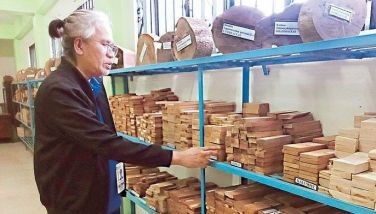Special Report: VRIS more than just an ID card
February 24, 2002 | 12:00am
Still, winning bidder Photokina Marketing Corp. continues to hold on, more than a year after bagging the project. Officials are praying that the Comelec will soon start the implementation of P6.5-billion VRIS, which they stress is far from being just an overpriced identification (ID) card.
"Contrary to what people think, VRIS is not just about issuing ID cards. It’s all about cleansing the electoral database," said Enrique Noora, Photokina vice president for special projects.
The VRIS provides a comprehensive and integrated solution for voter registration, including the development and maintenance of a secure database that would serve as the foundation for clean and honest elections.
Inherent in the approach to voter database cleansing is the use of a sophisticated automated fingerprint identification system that ensures the uniqueness of each voter’s record.
A secure, tamper-proof voter ID card will serve as tangible proof of the clean voters’ list, to be issued only to duly validated registered voters.
Noora explained that the ID card is simply the by-product of the cleansing, wherein only one person is registered under a name in the database.
"The ID is proof that a voter is listed in the database. The VRIS is what its name suggests – a registration system incorporating a clean database, which is updated each year to accommodate the increase of the voting population," he said.
"This is not a one-shot deal, this is continuing," he said.
A voter’s card will also facilitate identification during voting day.
"On the day of elections, a precinct book would be made available to poll handlers. They will look for a voter’s name in the book before handing out a ballot. We designed the card to incorporate all the requirements as provided for in Republic Act 8199, namely: voter’s name, precinct, address, gender, date and place of birth, and fingerprint," Noora said.
He pointed out that Photokina is currently discussing the basic design of the ID card.
The card will be made of highly durable material with a guaranteed life span of 10 years. Teslin is a type of pliant plastic material more durable than the PVC used in ATM cards.
More important than durability, however, are the security features that protect the card from tampering or counterfeiting.
"Any form of tampering will easily be noticed," Noora said.
He explained that there are six levels of security involved, including the use of UV/OVI technologies, features used in bank notes, and a special type of lamination that is completely tamper-proof.
Another key feature in the ID card is the use of biometrics, which can identify an individual through his unique biological features.
Right now, fingerprinting is most efficient and practical tool for identification, but others are being studied including use of DNA and the more expensive optic security system.
Noora said biometrics is the only way to clean the database and properly identify individuals.
In the past, the process involved name and addresses matching, which has proven to be unreliable. An individual intending to cheat has only to change a letter in a name and address to produce entirely different data.
"Do you think using the old system of running a name search for an address match will solve the problem. There is no way a database as huge as ours can be cleansed using the simple search and match method," Noora said.
In some cases, one address can indicate several residents with several different names, especially in squatter areas. Yet the data is valid.
"This is just once reason why the old method of cleansing has been less than successful," Noora pointed out. "This is why we proposed the use of fingerprints."
Under the proposal, four prints of an individual will be captured to match against the database of 35 million voters. Each municipality will be equipped with a capture machine for scanning of fingerprints.
The prints and other voter information will then be encrypted in a bar code on the ID.
"On election day, only one can pass the test," Noora said.
He stressed that a clean database ensures that a qualified voter can vote only once, putting an end to ghost and flying voters. (To be concluded)
BrandSpace Articles
<
>
- Latest
- Trending
Trending
Latest
Trending
Latest
Recommended






























